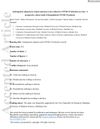Prevalence and Clinical Characteristics of Androgenetic Alopecia in Nepalese Patients: A Cross-Sectional Observational Study
March 2023
in “
Civil Medical Journal
”
TLDR Androgenetic alopecia in Nepalese men often starts around age 29, with a possible link to COVID-19 worsening the condition.
This study examined 304 male patients with androgenetic alopecia (AGA) in Nepal, with a mean age of 29 years. The most common AGA pattern was Norwood Hamilton type 3, followed by type 2. Notably, 1% of patients exhibited a female-type AGA pattern, where the frontal hairline was preserved. The average duration of AGA was 4 years, and 37% of participants had a history of COVID-19 infection, suggesting a potential link between COVID-19 and AGA exacerbation. The study highlights the need for a broader grading system for AGA, considering specific sub-classifications.






